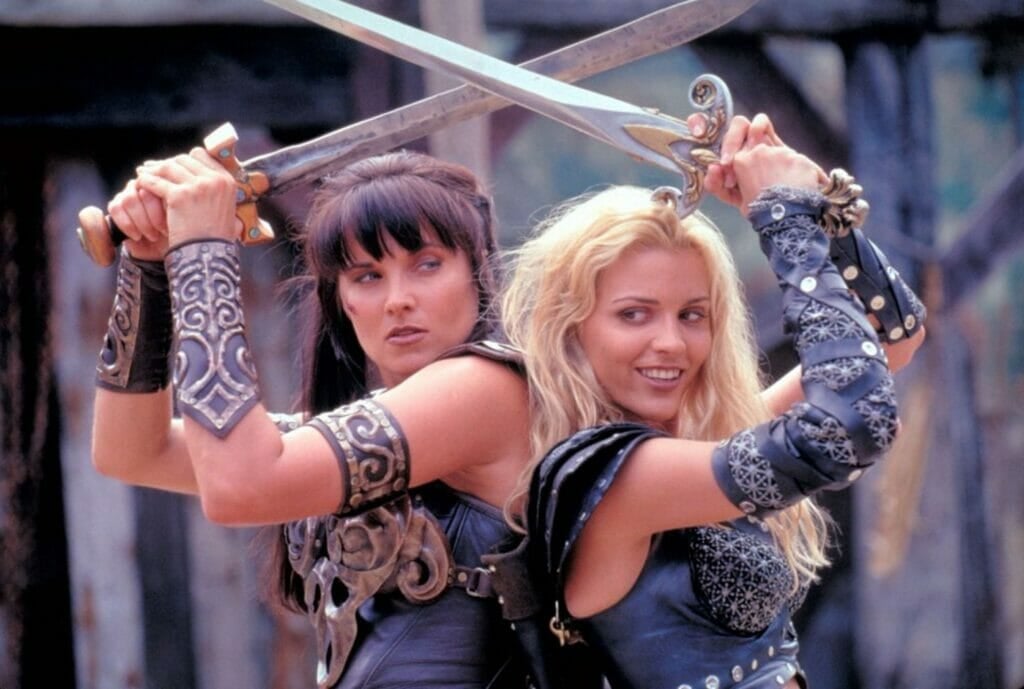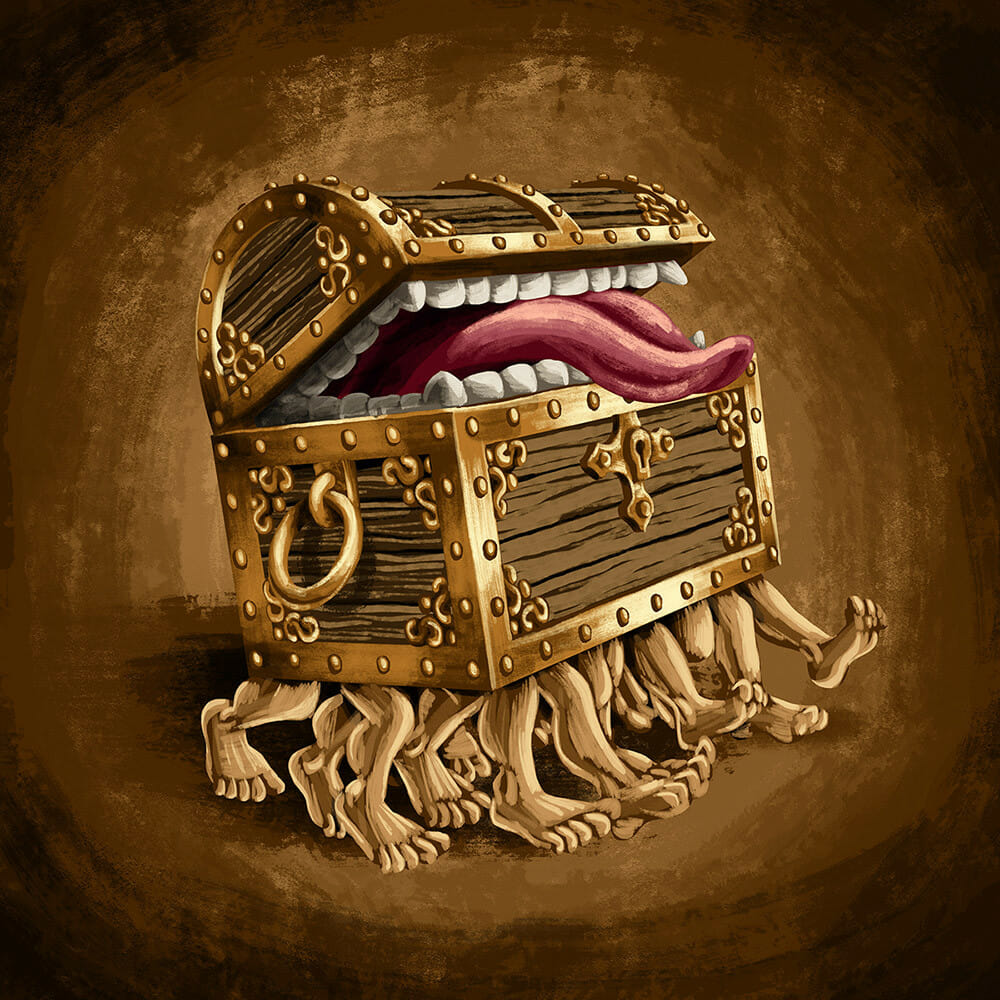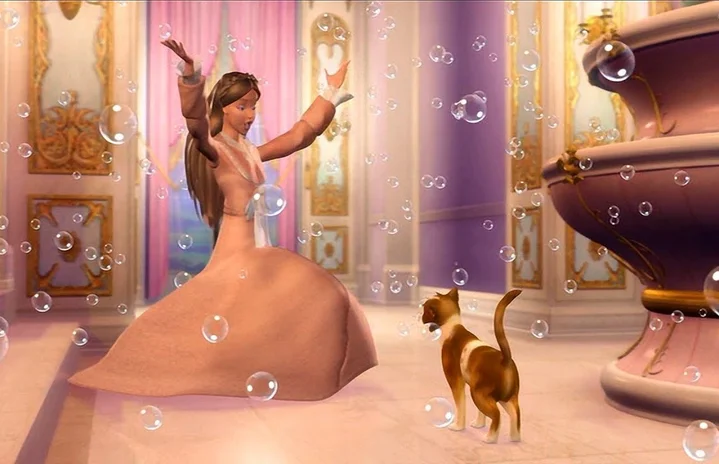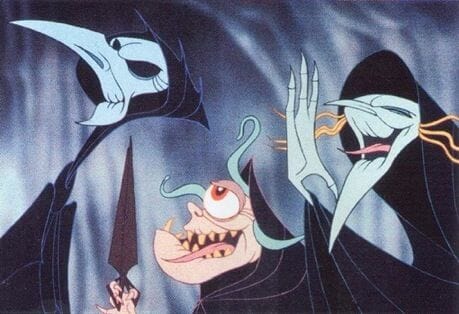The world of fantasy is a realm brimming with vivid imagination—fantastical settings, magic, creatures, and things we can only dream of in this world. The characters of fantasy stories are a pivotal element. Not only do they possess some of the same fantastical things the world around them does, but they must act as our eye into that world. Fantasy characters are balanced with enough makebelieve to give them a place in their universe, as well as enough reality to act as our guide in it.
These characters are sent on epic journeys and noble quests where they fight evil, become evil, explore terra incognita, set wrongs right and rights wrong, and they’re kind enough to bring us along on the adventure.
Let’s look into what makes a fantasy character, their types and archetypes, the process of creating them, and real examples from famous stories.
Table of Contents
What is a fantasy character?
A fantasy character is a fictional persona that exists within the realm of fantasy literature, films, or other forms of media. These characters often possess extraordinary qualities, abilities, or attributes that go beyond the limits of reality. They might be human, humanoid, or non-human creatures, and they play a pivotal role in fantasy narratives.
Type of fantasy characters
The list of fantasy character types could go on for as long as you could type, but here are some of the main types of character you’ll see in fantasy stories.
Heroes
These characters are central to the story and are often on a quest or journey to accomplish a specific goal. They usually possess some unique ability, outstanding bravery, or just an irrefutable motivation to overcome challenges and save themselves or others from peril. Examples of hero characters in fantasy include Frodo Baggins (Lord of The Rings), Arthur Pendragon (King Arthur), Ofelia (Pan’s Labyrinth), and Xena the Warrior Princess.

Villains
These characters serve as the primary obstacles or adversaries to the protagonists. They are often driven by malevolence, seeking power, control, or destruction. Iconic villains include Sauron (Lord of The Rings), The White Witch (Chronicles of Narnia), Maleficent (Sleeping Beauty), and Darth Vader (Star Wars).
Companions
These characters provide support, comedic relief, or moral guidance to the protagonist. They may possess unique skills or wisdom that aid the main character on their journey. Examples include Samwise Gamgee (Lord of The Rings), Fezzik (The Princess Bride), and The Luggage (Discworld).

Mentors
These characters are often older than the other characters and possess great wisdom, offering guidance and knowledge to the protagonist. They play a crucial role in shaping the hero’s journey and providing valuable life lessons. Gandalf (Lord of the Rings) and Merlin (King Arthur) are prominent examples.
Magical Beings
These characters are often non-human entities with magical powers or abilities. They may include creatures like dragons, elves, fairies, or other mythical beings. Examples include the seven dwarfs (Snow White), Smaug (The Hobbit), and Tinker Bell (Peter Pan).
Anti-Heroes
Unlike traditional heroes, anti-heroes are protagonists who possess flawed or morally ambiguous traits. They may be reluctant heroes or have questionable motives, making them complex and intriguing characters. An example is Geralt from The Witcher.
Creatures of Darkness
These characters embody darkness and malevolence. They may include vampires, demons, or other supernatural entities that thrive on chaos and destruction. Count Dracula from Bram Stoker’s Dracula is a classic example.
Animal Companions
These characters are animals or creatures that form a deep bond with the protagonist, often providing guidance, protection, or assistance. They possess a heightened level of intelligence or magical powers. Examples include Mushu (Mulan), Wolfie (Barbie’s Princess and the Pauper), and Ghost (Game of Thrones).

Trickster Spirits
Characters based on folklore and mythology, trickster spirits are mischievous, shape-shifting beings who play pranks and disrupt conventions. Loki from Norse mythology and Puck from Shakespeare’s A Midsummer Night’s Dream are famous examples.
Fantasy character archetypes
Fantasy character archetypes are recurring patterns or roles that characters often embody in fantasy narratives. Some common character archetypes include:
The Chosen One
A character with a special destiny or innate power that sets them apart and thrusts them into a pivotal role. Daenerys Targaryen (Game of Thrones), Eragon, and Frodo Baggins exemplify this archetype.
The Trickster
A mischievous and cunning character who uses wit and cleverness to outsmart others and bring about change. Robin Hood, Loki, e.g.
The Warrior
A skilled and brave character who excels in combat and often defends the weak or fights for a noble cause. Aslan, Prince Caspian, and Lucy Pevensie from The Chronicles of Narnia.
The Seer
A character who possesses deep insight, foresight, or prophetic abilities. They often guide the protagonist with their wisdom and mystical knowledge. Examples include the Oracle in The Matrix and the Three Witches in Shakespeare’s Macbeth.

The Fallen Hero
A character who was once noble and heroic but has succumbed to darkness, often due to a tragic event or personal flaws. They navigate a path of redemption or become formidable adversaries. Darth Vader from Star Wars and Gollum from Lord of the Rings embody this archetype.
The Reluctant Villain
A character who is forced or manipulated into becoming a villain, despite having good intentions or a conflicted conscience. They often struggle with their actions and may eventually seek redemption. Anakin Skywalker from Star Wars and Regina Mills/The Evil Queen from Once Upon a Time exemplify this archetype.
Process of crafting a fantasy character
Crafting a fantasy character can involve several elements. Here are some steps you might take to create your own.
1. Conceptualization
Determine the character’s role, motivations, strengths, weaknesses, and backstory.
2. Physical Appearance
Visualize the character’s appearance, including their race, species, clothing, and distinguishing features.
3. Personality Traits
Define the character’s personality, values, beliefs, and quirks that make them unique.
4. Abilities and Powers
Determine the character’s supernatural or extraordinary abilities that contribute to their role in the story. Particularly within the fantasy genre, this is an important aspect.
5. Flaws and Weaknesses
All good characters are complex, with contradicting traits and their own unique flaws and weaknesses. Be sure the flaws make sense for the character and affect how they ultimately tackle the problems presented to them.
6. Character Development
Consider how the character evolves and grows throughout the narrative, facing challenges and learning important lessons. This is where their flaws come in: What weaknesses must they overcome to accomplish (or fail to accomplish) their goals, leading to their ultimate character arc?
You might find it helpful to keep a character sheet with this information for each character separate from your main manuscript.

Examples of real fantasy characters
If you’d like to pull some inspiration from famous fantasy stories, here are some of the most well-known fantasy characters in literature.
- Aragorn from Lord of the Rings by J.R.R. Tolkien: A skilled ranger and rightful heir to the throne, destined to lead the fight against the forces of evil.
- Daenerys Targaryen from A Song of Ice and Fire by George R.R. Martin: A dragon queen with the ability to control fire and a determination to reclaim her family’s throne.
- Tyrion Lannister from A Song of Ice and Fire by George R.R. Martin: A witty and cunning dwarf who uses his intellect to navigate the political intrigues of the fantasy world.
- Gandalf from J.R.R. Tolkien’s The Lord of the Rings: Gandalf is a wise and powerful wizard who plays a crucial role in guiding and aiding the Fellowship of the Ring in their quest to destroy the One Ring.
- Alice from Lewis Carroll’s Alice’s Adventures in Wonderland: Alice is a curious and imaginative young girl who falls down a rabbit hole into a whimsical and nonsensical world. Her encounters with various fantastical creatures and her journey of self-discovery are central to the story.
- Matilda Wormwood from Roald Dahl’s Matilda: Matilda is an exceptionally intelligent and telekinetic young girl who uses her abilities to navigate a challenging life with neglectful parents and an oppressive headmistress.
- Drizzt Do’Urden from R.A. Salvatore’s Forgotten Realms series: Drizzt is a dark elf ranger who defies the evil and treacherous nature of his people. He embarks on adventures, fights against evil, and grapples with his own identity and morality.
- Lucy Pevensie from C.S. Lewis’ Chronicles of Narnia: Lucy is the youngest of the Pevensie siblings and the first to discover the magical land of Narnia. Her faith, innocence, and belief in Aslan contribute to the narrative’s themes of faith and redemption.
- Ged from Ursula K. Le Guin’s Earthsea series: Ged, also known as Sparrowhawk, is a powerful wizard who embarks on a transformative journey to overcome his pride and face the consequences of his actions in a world of magic and balance.
- Westley from William Goldman’s The Princess Bride: Westley is a swashbuckling hero who embarks on a daring quest to rescue his true love, Princess Buttercup. His bravery, wit, and unwavering devotion make him an endearing and memorable character.
- Lyra Belacqua from His Dark Materials by Philip Pullman: Lyra is a young girl who embarks on a journey across parallel worlds.
- Ciri from The Witcher by Andrzej Sapkowski: Ciri is a princess with a unique lineage and incredible magical abilities.
Fantasy characters possess the power to ignite our imaginations and transport us to extraordinary worlds. From valiant heroes and cunning tricksters to wise seers and fallen anti-heroes, these characters inhabit the realms of literature, films, and folklore, leaving an everlasting imprint. There are many compelling examples from iconic fantasy authors for us to draw inspiration from to create our own memorable characters.